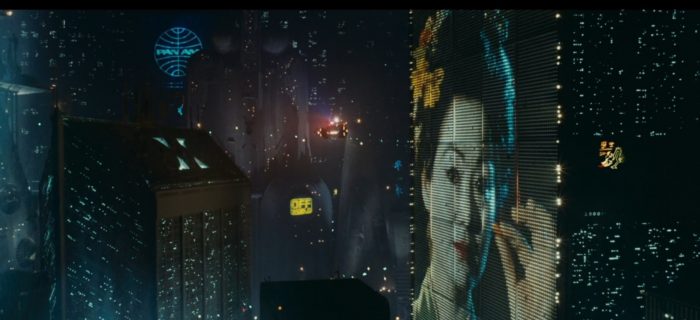Peeking from slim cracks in the skyline above, the InfoSky stretched bright and clear, a cinematic quilt of promotional narratives, each patch blinking and shifting across the heavens…
“Japan is still the future,” declared author William Gibson at the dawn of the twenty first century. It remains the template for what is to come in Cash Crash Jubilee, the ambitious and highly enjoyable debut novel of Tokyo-based writer Eli K. P. William, who takes Gibson’s cyber-punk vision of the digital world into darker hyper-capitalist territory.

Like many classics of the genre, CCJ presents a dystopia that exaggerates some of the key features of the contemporary world in a satirical yet satisfyingly dramatic way. Think back to Blade Runner, the SF of Frederik Pohl and C.M. Kornbluth, the prophetic warnings of 1984, Brave New World and The Time Machine.
Now imagine the whole on-line ecosystem of Google, Facebook, Youtube etc. continuing to grow as fast as it has over the past fifteen years. Imagine the virtual world increasing its dominance over quotidian reality at the same dizzying rate.
At some unspecified time in the future, after some unspecified global disaster, this is what you get.
The InfoClouds began to pour. A billion-gazillion logos and celebrity endorsements and specialists explaining the facts of this and that plummeted all about at high velocity. They splattered into formless colour and light before Amon’s mind could register what it was seeing…
In future-Tokyo the Otemachi skyline is dotted with the regional headquarters of huge corporations, known as MegaGloms. “Free citizens” are immersed in a virtual reality system called the ImmaNet, which transmits images to an eye-screen fused to the human retina. An implanted BodyBank computer records their every action – from blinking to sexual intercourse – and instantly debits the appropriate licensing fee from their bank accounts.
Everyone and everything look great all the time.
When the people around Amon moved, the ImmaNet ensured their digimade appearance moved with them, the digital world inextricably bound to its naked counterpart. There were no bad hair days, no bulging veins, no sunspots or hairy moles… Average faces were coded with distinction, strange faces averaged into charm, the power of digimake cleansing the metropolis of ugliness…
Our hero, Amon Kenzaki, is a diligent worker at GATA, the Global Action Transaction Authority, a monopolistic Paypal-type organization that handles all financial events in the ImmaNet economy.
As a liquidator, Amon’s job is to capture citizens who have spent themselves into bankruptcy, remove their BodyBanks and despatch them to the BankDeath Camps, a kind of super-Sanya located in the District of Dreams. In a nice touch the District of Dreams is separated from the Free World by the Sanzu River, divider of this world and the next in Japanese Buddhist cosmology.
Gradually Amon’s doubts about the system he serves start to grow.
“All the freedom you can earn” meant everything was permitted as long as you could afford it… In the Free Era creditable citizens who worked hard and acted within their means were granted the chance to earn limitless freedom and discreditable citizens who didn’t went bankrupt.
Ginza, Akihabara, Shinjuku, Shibuya – all Tokyo is here, but not as you know it, Jim.
Identity is fluid. Foreigners, quasi-foreigners and fake foreigners are everywhere, but loyal dog Hachiko still awaits his master at Shibuya Station and Kabukicho is still Kabukicho, ever ready to satisfy your darkest desires.
Long snaking advertisements promoted the local businesses; half-naked girls brawling on a bed of satin, champagne bottles spurting foam into eager upturned mouths… a syringe sticking into an arm played on the road, a cat-o-nine-tails striking a naked back appeared on a building’s façade…
William’s writing is dense and smart and convincing. Cash Crash Jubilee is the first book in a trilogy that promises to be a notable contribution to a long and distinguished tradition.
